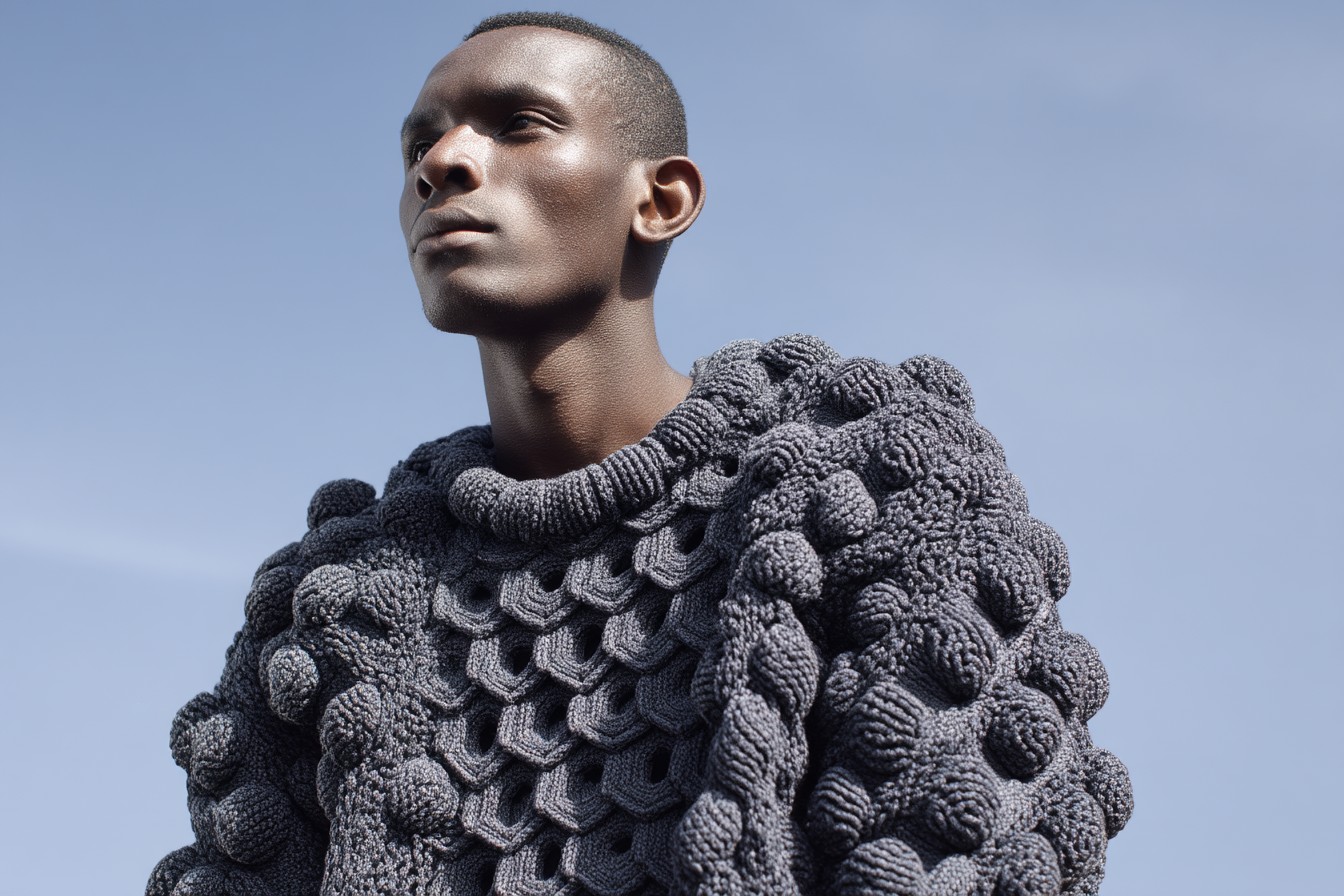My mate Dave texted me at half eleven last night with a photo of two nearly identical white Oxford shirts—one from Primark (£12) and one from John Lewis (£45). “Alex, tell me why the hell I should spend the extra thirty quid? They look the bloody same.” I was tempted to launch into my standard lecture about fabric weight, stitches per inch, and the economic implications of fast fashion, but honestly, it’s a fair question. When is it actually worth spending more, and when are you just paying for a fancy carrier bag and the smug feeling of not being in Primark?
I’ve been on both sides of this equation, believe me. There was a time in my early twenties when my entire wardrobe came from Primark, Next sale rail, and whatever my mum got me for Christmas. I still remember my first “investment purchase”—a £120 pair of selvedge jeans that I had to eat beans on toast for two weeks to afford. I was absolutely convinced they’d transform me into a sophisticated man-about-town. They didn’t, mainly because I wore them with my battered Primark shirts and scuffed Topman shoes. The lesson hit me harder than the beans: no single item makes an outfit. It’s the weakest link that brings the whole thing down.
Let’s get brutally honest about the price-quality relationship, because it’s not as straightforward as those style magazines (yes, including mine sometimes, mea culpa) make it seem. There’s a curve where quality rises with price—but only to a point. After that, you’re often paying for brand prestige, marketing campaigns, or some Italian bloke’s name on the label.

Take those white shirts Dave was asking about. The truth? The John Lewis one probably is better—slightly higher thread count, more consistent stitching, buttons that won’t pop off the first time they meet your washing machine. Will it last three times as long as the Primark one? Maybe, if you treat it well. Will anyone other than you notice the difference? Probably not, unless they’re the type who asks to check your shirt label, in which case you should be questioning why you’re friends with such a weirdo.
Here’s my real-world breakdown of when to splash out versus when to save your cash:
Spend more when the item is structural or foundational. Good shoes, a proper winter coat, a suit if you wear one regularly—these are your building blocks. I’ve got a pair of Loake brogues that I’ve had resoled three times over eight years. Cost per wear is down to pennies now. Meanwhile, I’ve gone through countless pairs of cheap shoes that died miserable deaths after a single rainy season in Manchester. My dad calls this the “Samuel Vimes ‘Boots’ theory of economic injustice,” apparently from some Terry Pratchett book he loves. The poor man buys cheap boots that wear out quickly, while the rich man buys expensive boots once that last forever. It’s annoyingly accurate.
Save your money when the item is trend-driven or will take serious abuse. That neon green overshirt that’s somehow everywhere this season? Get the cheap version, wear it for the six weeks it’s in fashion, then donate it without the sting of regret. Same goes for white t-shirts (they’ll yellow eventually no matter what), gym clothes (they’re going to get sweaty and stretched), and anything you’ll wear to festivals (they will get covered in mud/beer/substances I won’t mention in case my mum reads this).
The middle ground is where it gets tricky. Is John Lewis knitwear worth the jump from Primark? Usually yes—the difference in how a decent merino wool jumper drapes compared to an acrylic blend is noticeable even to untrained eyes. Are John Lewis jeans better than Primark ones? Probably, but whether that justifies triple the price depends on how often you wear them and whether you’re the type to notice the difference in pocket lining quality (I am, sadly, that type).

Something I’ve learned from years of being that irritating friend who inspects clothing labels in shops: sometimes the price jump isn’t about immediate quality but longevity. A £15 Primark shirt and a £45 John Lewis one might look identical on day one. By wash twenty, the differences become obvious—collar shapes that hold, buttons that stay attached, fabric that doesn’t develop that weird bobbling that makes you look like you’re wearing a tennis ball.
I did an experiment a few years back (partly for an article, partly to satisfy my own curiosity) where I bought similar items across different price points and tracked their condition over time. The results were… complicated. Some budget pieces outlasted their pricier counterparts. A plain T-shirt from Uniqlo (mid-range) beat both Primark (budget) and Ralph Lauren (premium) in keeping its shape and color. But generally, the more expensive items aged more gracefully—fading in a good way rather than falling apart.
Something else worth considering: the middle isn’t always the safest bet. Those middle-market retailers sometimes give you the worst of both worlds—not cheap enough to be guilt-free impulse buys, not well-made enough to last. I’ve got a theory that some of the mid-range high street brands actually offer the worst value per pound spent. You’re paying for the marginally nicer shopping experience and carrier bag, not significantly better clothes.
There’s the ethical angle too, which I can’t ignore even though I know it complicates the calculation. The £12 shirt raises questions about labor practices that the £45 one might (might!) avoid. But then the £45 shirt probably still isn’t made by workers earning a genuinely fair wage. The £145 shirt might be, but are you really getting three times the ethics? This is when I start getting a headache and wondering if I should just learn to weave my own fabric.
Sometimes the premium is worth it for the design rather than the quality. High street retailers often do decent basics, but their more complex pieces can look a bit… off. Slightly wrong proportions, details that almost work but don’t quite land. I’ve got a Paul Smith jacket that cost a painfully large number and honestly, the fabric isn’t miles better than something from Zara—but the cut is in a different league entirely. It makes my shoulders look like they belong to someone who occasionally exercises rather than someone who mainly sits hunched over a laptop writing about clothes.

My personal rule of thumb now? I do a quick cost-per-wear calculation. That £45 John Lewis shirt, worn once a week for a year before it starts to look tired = about 87p per wear. The £12 Primark equivalent might last six months of regular wear, so that’s around 46p per wear. Not actually that different. But if it’s something like a decent winter coat that you’ll wear daily for five years? The premium version wins the value contest hands down.
I also think about what I call the “joy factor.” Some expensive things just make me happy every time I put them on. They fit better, feel nicer against the skin, have little details that make me smile. Is that worth paying for? Depends on your bank balance and priorities, I suppose. I’ve got a stupidly expensive cashmere jumper that makes me feel like I’ve been wrapped in a cloud every time I wear it. Worth every penny of the eye-watering price to me, but I completely understand why someone else would think I’m off my rocker for spending that much on what is, essentially, a sheep’s haircut.
So what did I tell Dave about those shirts? I suggested he buy one of each. Wear the Primark one when he’s going to a curry house or a pub where someone might spill beer on him. Save the John Lewis one for meetings and dates. The true test isn’t how they look in smug mirror selfies but how they’re holding up three months from now. Though knowing Dave, he’ll have spilled curry on both of them by next Tuesday anyway.
Look, there’s no universal right answer to the Primark versus John Lewis debate. It’s about your budget, priorities, and how much certain details matter to you. Just don’t fall for the idea that expensive always equals better, or that saving money always equals savvy shopping. Sometimes that bargain is actually costly in the long run, and sometimes that premium price tag is just paying for someone else’s marketing department. Trust your hands as much as your eyes—feel the fabric, check the seams, and ask yourself: “Will I actually care about the difference when I’m wearing this on a random Tuesday?”
And if anyone gives you grief about shopping at Primark, just remember I once interviewed one of Britain’s best-dressed male models who confessed that his plain white tees are all from there. Style isn’t about price tags—it’s about knowing what works for you and your life. Though, between you and me, those John Lewis Egyptian cotton sheets are absolutely worth every penny. Some things you just shouldn’t skimp on, and what you sleep in is one of them. But that’s a whole other article.



